Tuesday 13 January 1942
 |
| Heinkel He 280 V-1 DL+AS with engine intake fairings. The jet engines are not available on 13 January 1942, so the Germans are only conducting glider tests. |
 |
| Plattsburgh Daily Republican, January 13, 1942 (Plattsburgh, N.Y.). |
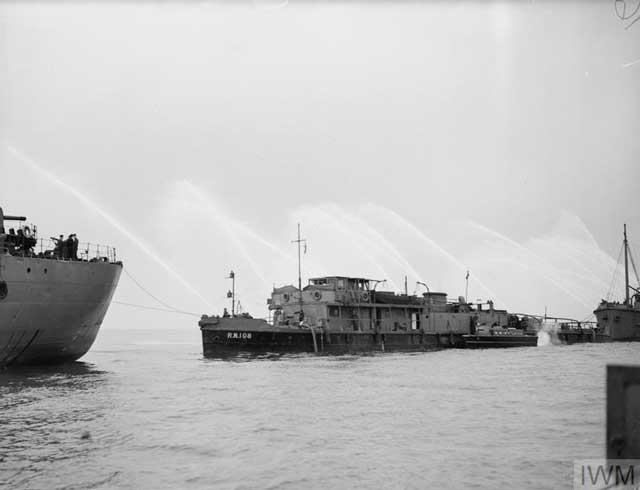 |
| "A long line of fire pumps pouring out thousands of gallons of water a minute from fire fighting ships during the demonstration." Gourock, on the Clyde, 13 January 1942. © IWM (A 7248). |
A convoy arrives in Singapore bringing 51 Hurricane fighters but only 24 pilots. There are surplus pilots in Singapore, but they are Brewster Buffalo pilots and will have to retrain in the new planes. The planes also will take time to assemble and get ready for flight.
 |
| Coupon checks issued by the Philippines government dated 13 January 1942. Despite the battle underway in Bataan, the business of government continues. |
In Burma, the Joint Military Council notes the rapid advance of the Japanese into the country. The generals propose building a new supply road to the Nationalist Chinese through northern Burma which they have a better chance of holding against the Japanese invasion. This road, north of the current Burma Road, will run through Myitkyina and connect to the current Burma Road at Wandingzhen, Yunnan. This eventually is called the "Ledo Road." Its construction is a massive project through very rough terrain and depends on holding northern Burma, which is by no means certain. The Japanese are invading Burma, in fact, in large part to cut off such roads which enable Chiang Kai-shek to hold out in Chungking. The only alternative to a road from India to China is air supply, which requires a dangerous flight over the Himalayas (known as "the Hump"). However, the Allies at this time do not have aircraft for sustained use of this route.
 |
| The cover story in the 13 January 1942 Look magazine is "Our War With Japan." |
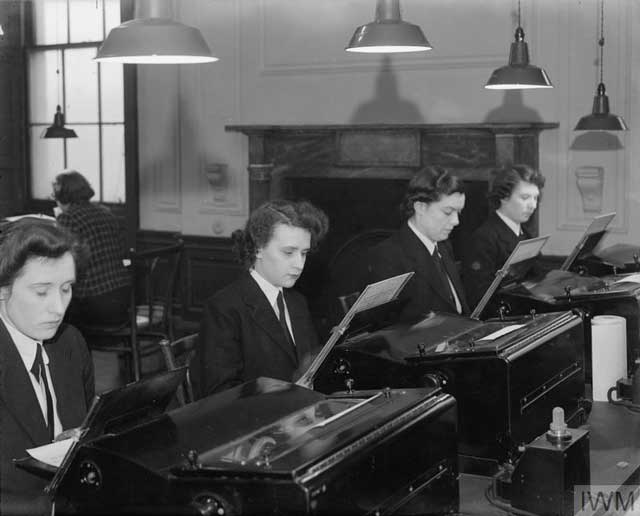 |
| "Teleprinters in training concentrating on the job." Leonard House, Rosyth Command, 13 January 1942. © IWM (A 7041). |
 |
| Damage caused by "the Waller's raid" on 13 January 1942 in Lowestoft. This view is from London Road north facing east. |
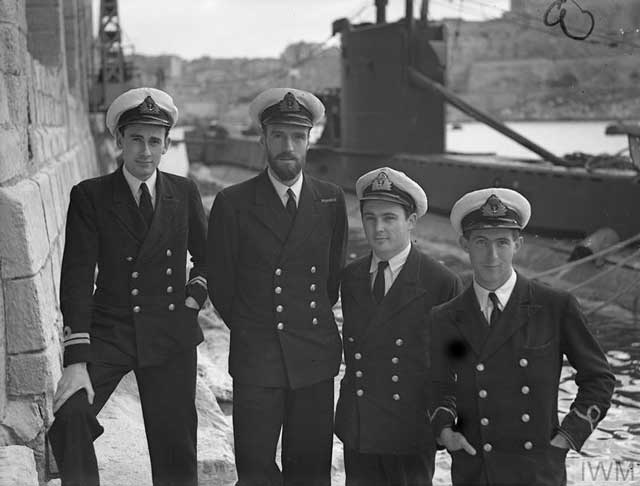 |
| 'Officers of UPHOLDER. Left to right: Lieut F Ruck-Keene; Lieut Cdr Wanklyn, VC, DSO, RN; Lieut J R Drummond, RN; Sub Lieut J H Norman, RNVR." They are assembled at a submarine base in Lazzaretto, Mandel Island, Malta, on 13 January 1942 for Wanklyn to receive the Victoria Cross (© IWM (A 7295)). |
the punishment, through the channels of organized justice, of those guilty of, or responsible for, these crimes, whether they have ordered them, perpetrated them, or participated in them.Polish General Wladyslaw Sikorski and French General Charles de Gaulle are among the signatories.
At the Arcadia Conference in Washington, which is in its final days, the Combined Chiefs of Staff agree to begin moving some United States Air Force units to the United Kingdom as soon as possible. The US Army V Corps already has a presence there.
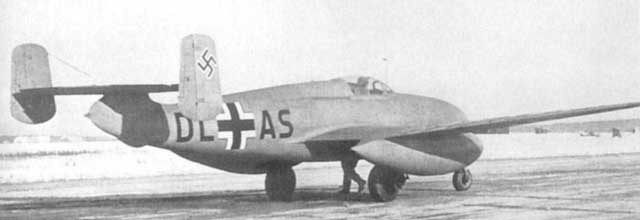 |
| The prototype Heinkel He 280 V1, DL+AS, with engine intakes and exhausts faired over, that was lost 13 January 1942 when Helmut Schenk successfully ejected from it. |
US Military: Some sources place the first flight of the Igor Sikorsky USAAF R-4 helicopter on 13 January 1942. However, better records suggest that it takes place on 14 January, so we discuss it there.
 |
| The prototype He 280 V1 DL+AS being towed by a Heinkel He 111 bomber on a previous flight. |
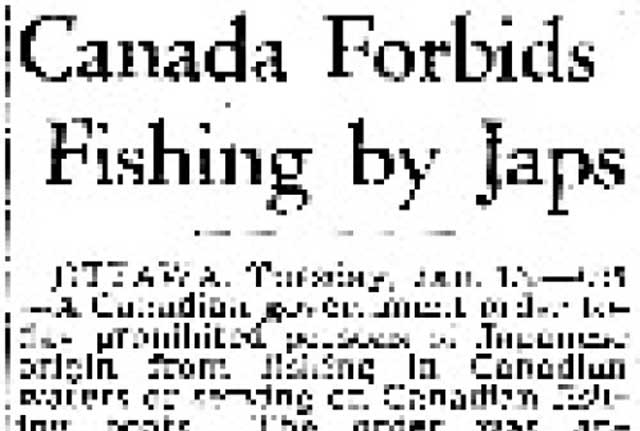 |
| Japanese-Canadians are barred from fishing, 13 January 1942. |
 |
| Henry Ford, right, with his famous "plastic" soybean car. |
- promote agriculture
- improved safety of these cars
- replace metals, which incidentally would aid the war effort.
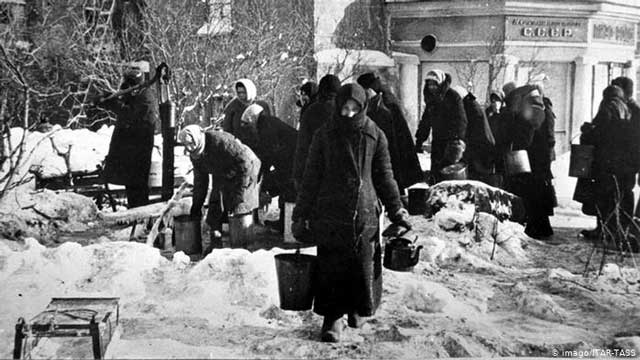 |
| Leningrad, 13 January 1942. Finding potable water, which is used to make soup for dinner. Someone has brought their sled, left, to make the daily ritual a bit easier. |
Nineteen shipyards on the west coast go to continuous, around-the-clock, seven-day-a-week production schedules. The U.S. Maritime Commission faces a manpower crisis in the shipyards, many of which are newly built in areas without experienced workers. This leads to more employment by women and Africa-Americans. Major production yards are located at Oakland and San Francisco, California, Tacoma, Washington, and Portland, Oregon. Henry J. Kaiser is a major driving force behind ship construction on the west coast, and he has several yards for his Kaiser Permanente organization at Richmond, California.
At the Metropolitan Museum of Modern Art in New York, the new exhibition is Latin-American Art. Among the artists featured are Diego Rivera, famous for his murals such as one in the lobby of Rockefeller Center, and Wifredo Lams. The United States is doing everything it can think of to tighten ties with Latin America during the early days of the war.
 |
|
| "A Chief Petty Officer Wren in charge of Teleprinting Trainees checks results with a Wren Trainee Teleprinter operator." St. Leonard House, Rosyth Command, 13 January 1942 (© IWM (A 7043)). |
1942
January 1942
January 1, 1942: Declaration By United Nations
January 2, 1941: Manila Falls to Japan
January 3, 1942: ABDA Command Announced
January 4, 1942: MacArthur on His Own in the Philippines
January 5, 1942: Soviets Plan General Offensive
January 6, 1942: US Army in Europe
January 7, 1942: Soviet General Offensive Opens
January 8, 1942: Hitler Sacks Hoepner
January 9, 1942: Battle of Dražgoše
January 10, 1942: Building the Jeep
January 11, 1942: Japan Takes Kuala Lumpur
January 12, 1941: Rommel Plans Counterattack
January 13, 1942: First Ejection Seat Use
January 14, 1942: Operation Drumbeat First Sinking
January 15, 1942: U-Boat Off NYC
January 16, 1942: Carole Lombard Crash
January 17, 1942: British Take Halfaya Pass
January 18, 1942: Soviet Paratroopers in Action
January 19, 1942: FDR Approves Atomic Bomb
January 20, 1942: The Wannsee Conference
January 21, 1942: Parit Sulong Bridge Battle
January 22, 1942: Parit Sulong Massacre
January 23, 1942: Japan Takes Rabaul
January 24, 1942: Battle of Makassar Strait
January 25, 1942: Kholm Surrounded
January 26, 1942: GIs Land in Europe
January 27, 1942: Battle of Endau
January 28, 1942: Rommel Takes Benghazi
January 29, 1942: First US Coast Guard Ship Sunk
January 30, 1942: Singapore Isolated
January 31, 1942: Army Group South Averts Disaster
2020









